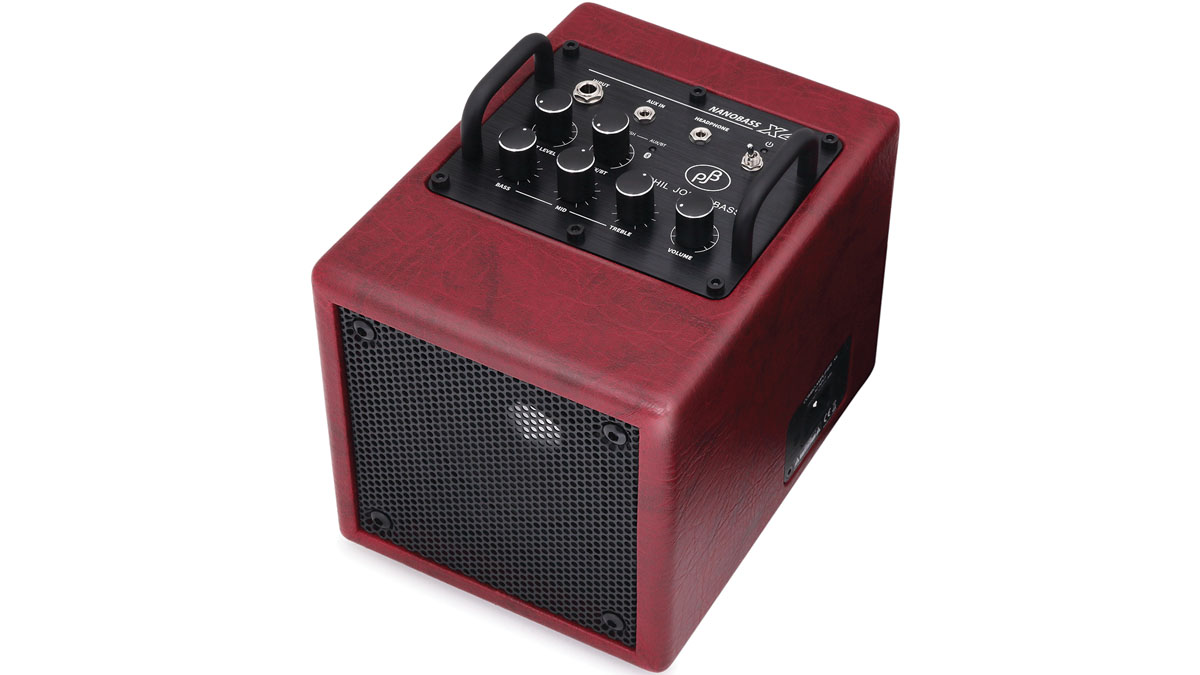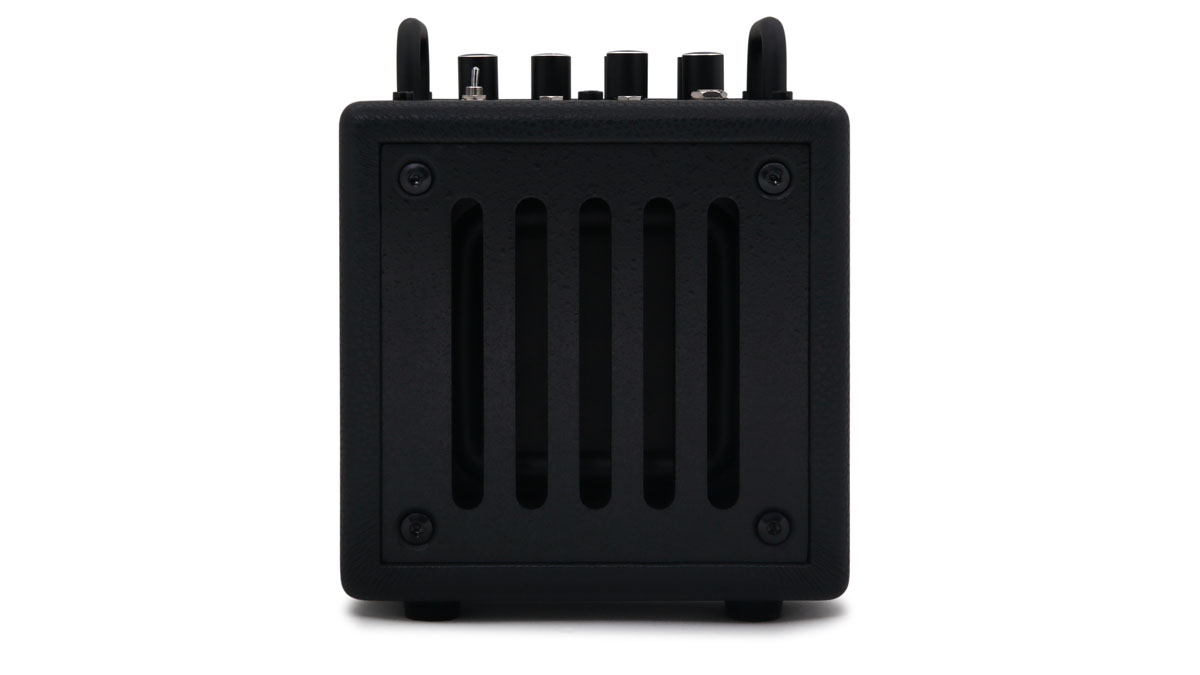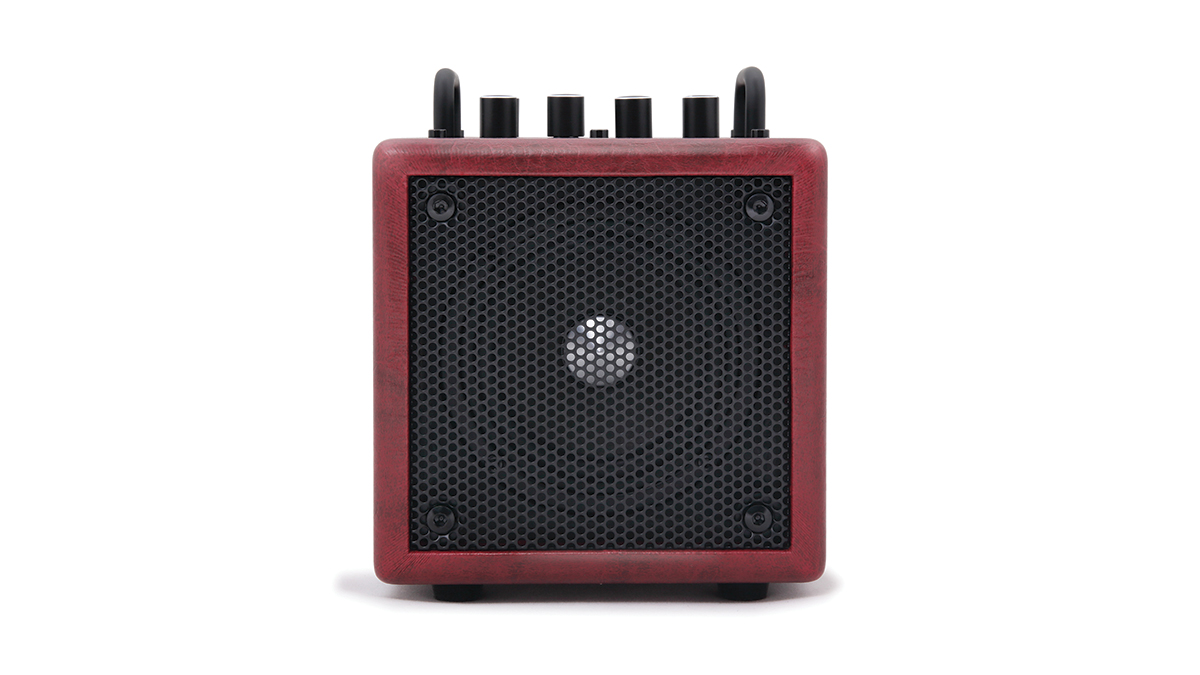GuitarPlayer Verdict
Small and light powerful tone and impressive soundstage for its size, the Phil Jones Bass Nanobass X4 is a digital bass amp that works a treat on guitar – or indeed a Wurlitzer electric piano if you have one handy.
Pros
- +
Potent three-band tone sculpting.
- +
Looks sharp as well.
Cons
- -
Some may not like the absence of a battery-power option.
You can trust Guitar Player.
For reasons obvious from the company’s name, Phil Jones Bass may not be known to many guitarists. Jones has been active in pro audio for decades, and for the past 20 years has built his reputation in the bass world with a line of compact amps and combos that deliver impressive power and pristine tone.
The new Nanobass X4 digital amp reviewed here is the smallest and most portable combo Phil Jones Bass has made, and while it’s part of PJB’s bass amp line, it’s a full-range combo (68Hz to 15kHz) that’s suitable to virtually any instrument, including electric guitar. PJB sent one over so I could see how it measures up as a guitar practice amp.
It’s a tiny thing, slightly smaller than an eight-inch cube and weighing just a tad over five pounds, but it packs a punch, delivering 35 Class D watts through its four-inch speaker. It also looks smart in its red covering, which feels rather like supple leather. (White and black are also available.)
As modern practice amps go, the X4 is spartan. There are no built-in effects, rhythm machines or digital recorders. PJB has put its emphasis on tone with the X4, and it shows.
All those benefits are evident in the X4. I tested it with a range of guitars, including my go-to Gibson ES-345, a Fender Triple Jazzmaster with Tim Shaw pickups and a Reverend Contender RB, using a selection of effects pedals. Whatever guitar I played, the little X4 delivered clear and powerful tone, with a deep soundstage that belies the combo’s size.
But it’s that three-band EQ circuit that really impressed me, with its power to cut and boost judiciously where necessary or desired. Just for fun, I plugged a vintage Wurlitzer electric piano into the X4 and was surprised by how good it sounded throughout its five-octave range.
Despite the X4’s tiny size, PJB put a lot of thought into the cabinet, which is heavily braced internally and damped to prevent cabinet coloration
Likewise, a Korg KR-55 Pro rhythm box rocked out nicely through the auxiliary input, as did tracks streamed via Bluetooth, and while I’d typically play either through my studio monitors, the X4 makes for a convenient option.
All the latest guitar news, interviews, lessons, reviews, deals and more, direct to your inbox!
However, there is Bluetooth 5.0 connectivity, allowing you to stream audio through this surprisingly high-fidelity system, as well as a stereo 3.5mm auxiliary input for external audio or a rhythm machine.
The amp’s top panel is where you’ll find all inputs, outputs and controls. The X4 has a 1/4-inch instrument input, the afore-mentioned 3.5mm stereo aux input and a 3.5mm mono headphone jack.

Controls comprise an input level with clip LED for the 1/4-inch input, an aux/Bluetooth 5.0 volume control with mode select button and indicator light (steady green for aux, steady blue for Bluetooth and flashing blue when pairing), a trio of tone controls — bass, mid and treble — offering a potent 15dB of boost and cut, and a volume control that governs the output level from the speaker and headphone jack.
The aluminum knobs are finished in elegant satin black, with an aluminum dot indented on top and a beveled edge that reveals the metal beneath. The knobs are well spaced, pleasant to grip and have a precise feel. They look smart as well, and the bare aluminum edge helps them stand out against the black control panel.
Around front, a metal grille covers PJB’s proprietary N52 NeoPower four-inch driver, which was developed to have both full range and greater power handling via a custom Rectangular Auxiliary Low Frequency Radiator (RALFR) that reduces the speaker cone excursion.

Despite the X4’s tiny size, PJB put a lot of thought into the cabinet, which is heavily braced internally and damped to prevent cabinet coloration. Everything here is designed to let you hear your instrument as it actually sounds.
The digital end includes an analog-to-digital converter chip at the front running at 96kHz sampling rate, and a Class D power amp that renders high-resolution audio. Class D amps have the advantages of running cool, weighing little and packing plenty of power.
And while early examples suffered from harsh-sounding artifacts, those issues have been worked out in the modern era, making these amps efficient and light, with no sacrifice in audio quality.
The X4 is a loud, proud and versatile performer that will blow you away with its clarity and power while taking up next to no space whatsoever
Some may complain that, for all its compact size and light weight, the X4 lacks a battery-power option. Jones replies that while he “would have loved to include a battery option, however this does pose some problems,” which include a “large increase in price, as the lithium battery required would need to be substantial.” He also points to restrictions on shipping and storage of lithium batteries, such as when flying.
Those who want a battery-powered portable amp will have to look elsewhere. But as a toneful desktop companion with auxiliary inputs and Bluetooth 5.0, the X4 is a loud, proud and versatile performer that will blow you away with its clarity and power while taking up next to no space whatsoever.
Some may prefer a practice amp with more bells and whistles, but if your first priority is to hear your instrument in all its glory, PJB’s straightforward, no-nonsense X4 will give you what you crave.
Specifications
- PRICE: $359
- OUTPUT: 35 watts Class D
- SPEAKER: PJB N52 NeoPower 4” driver with Rectangular Auxiliary Low Frequency Radiator (RALFR)
- FREQUENCY RESPONSE: 68Hz–15KHz
- CONTROLS: Input level with clip LED, aux/Bluetooth 5.0 with mode select, bass (shelf 100Hz, +/-15dB), mid (shelf 1kHz Bandwidth 120Hz-10Kz, +/-15dB), treble (shelf 10kHz, +/-15dB), volume (master)
- I/O: 1/4” instrument in, 3.5mm stereo aux in, 3.5mm headphone, Bluetooth 5.0
- OTHER: Universal voltage (100–240V), 6’ angled AC power cord
- DIMENSIONS: 6.3 x 7.9 x 7.8 inches (WxHxD)
- WEIGHT: 5.3 lbs
- BUILT: China
- CONTACT: Phil Jones Bass
Christopher Scapelliti is editor-in-chief of GuitarPlayer.com and the former editor of Guitar Player, the world’s longest-running guitar magazine, founded in 1967. In his extensive career, he has authored in-depth interviews with such guitarists as Pete Townshend, Slash, Billy Corgan, Jack White, Elvis Costello and Todd Rundgren, and audio professionals including Beatles engineers Geoff Emerick and Ken Scott. He is the co-author of Guitar Aficionado: The Collections: The Most Famous, Rare, and Valuable Guitars in the World, a founding editor of Guitar Aficionado magazine, and a former editor with Guitar World, Guitar for the Practicing Musician and Maximum Guitar. Apart from guitars, he maintains a collection of more than 30 vintage analog synthesizers.

